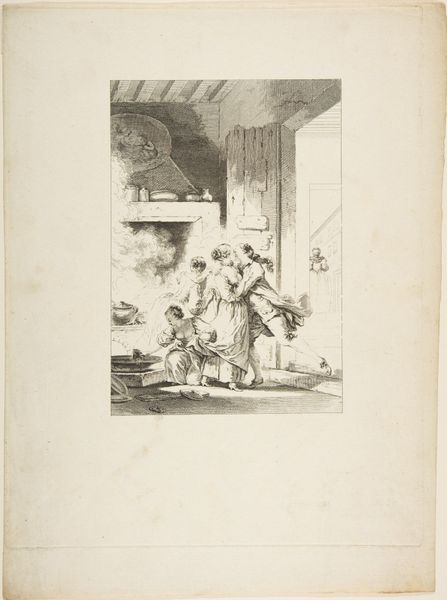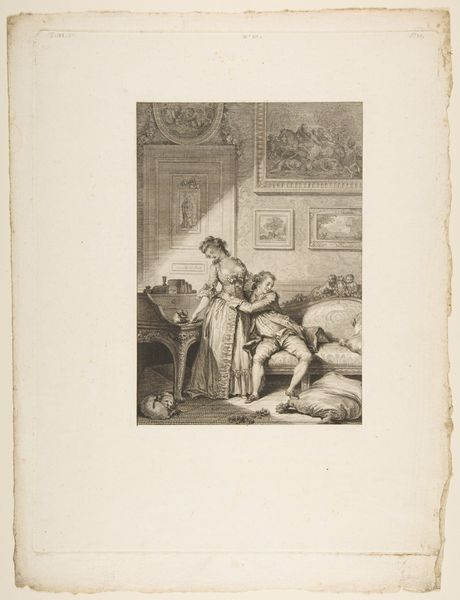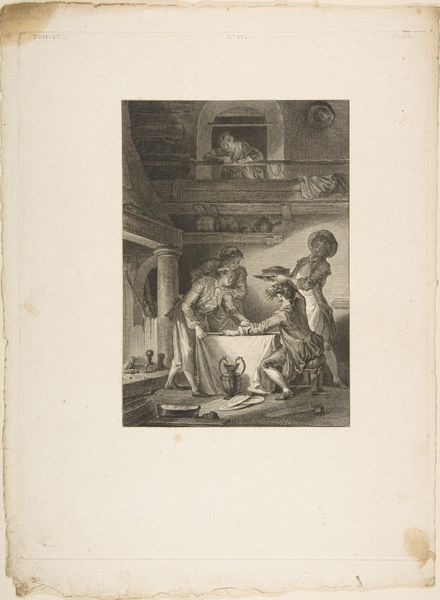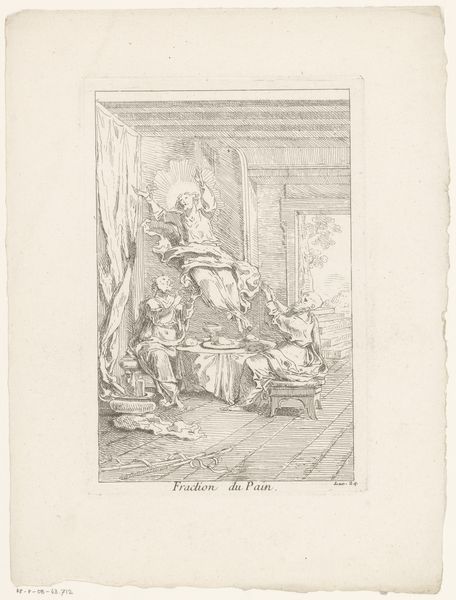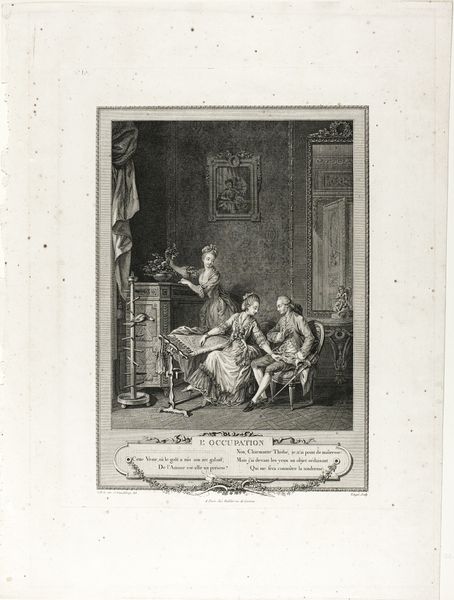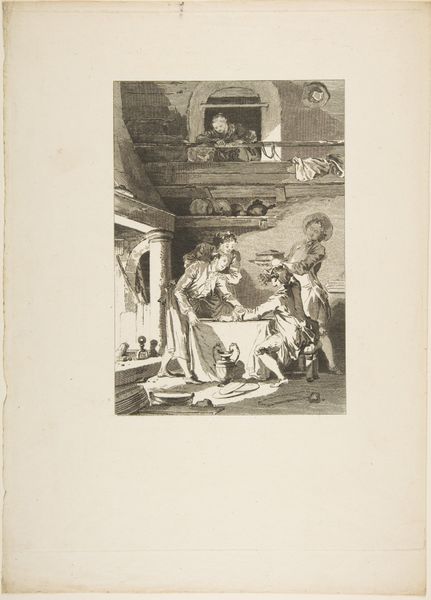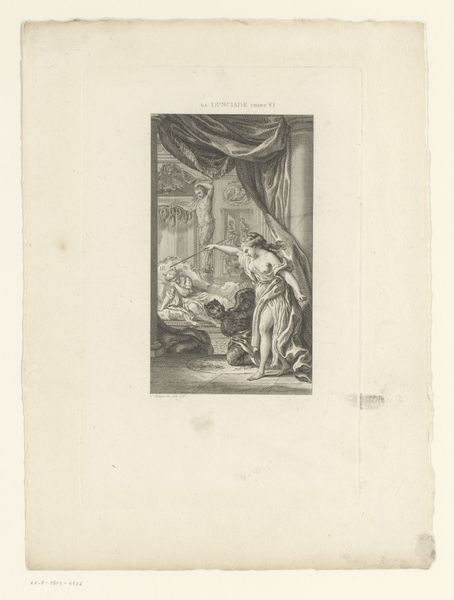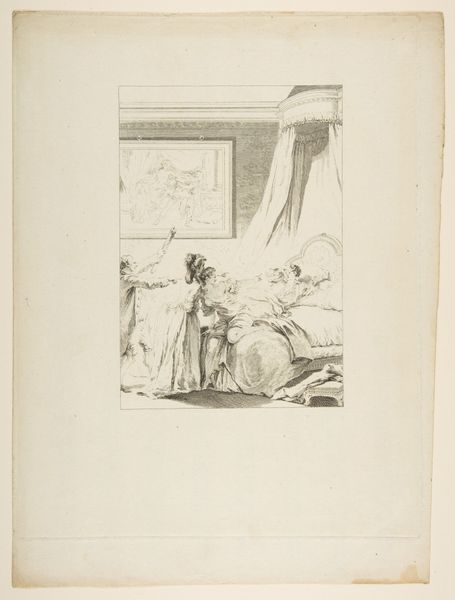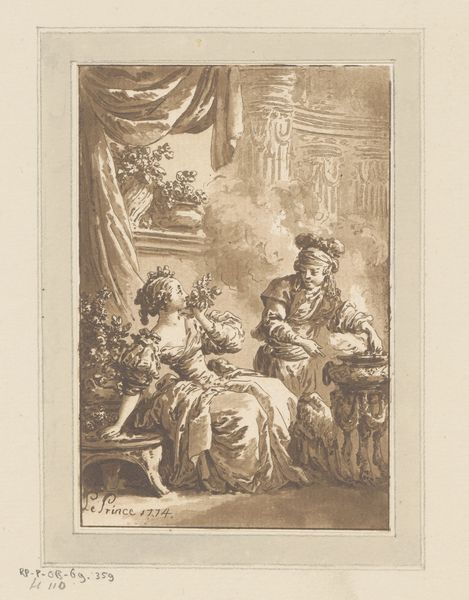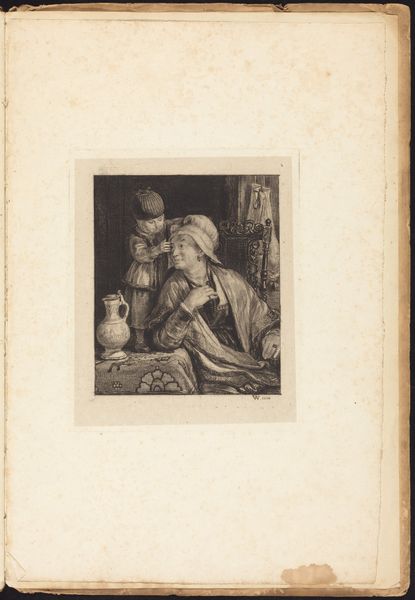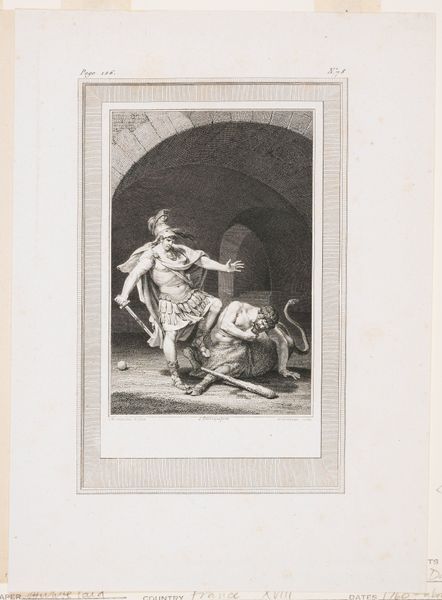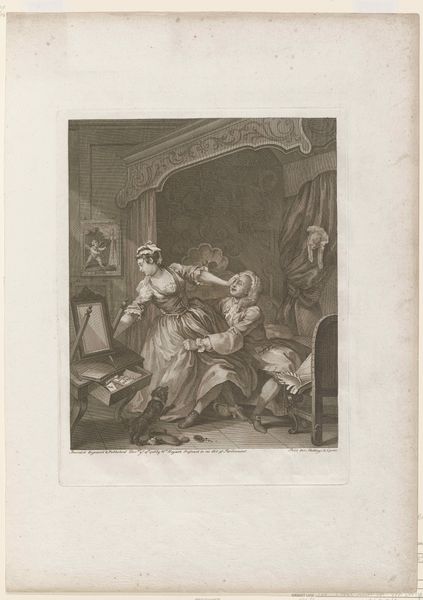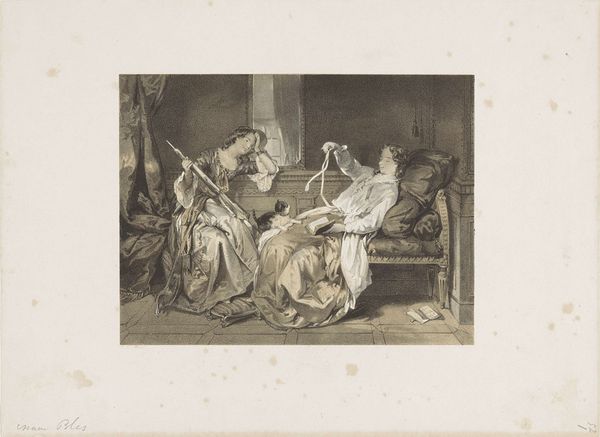
On ne s'avise jamais du tout, from "Contes et nouvelles en vers par Jean de La Fontaine. A Paris, de l'imprimerie de P. Didot, l'an III de la République, 1795" 1795
0:00
0:00
drawing, print, engraving
#
drawing
# print
#
romanticism
#
genre-painting
#
history-painting
#
engraving
Dimensions: Sheet: 13 3/4 × 10 7/16 in. (35 × 26.5 cm) Plate: 12 7/16 × 9 5/8 in. (31.6 × 24.5 cm)
Copyright: Public Domain
Editor: This print, made in 1795 by Jean-Baptiste Patas, illustrates a scene from Jean de La Fontaine's "Contes et nouvelles en vers." I'm struck by the contrast between the intimate embrace in the foreground and the architectural setting receding into the background. What stands out to you in this work? Curator: It's fascinating how this engraving uses a seemingly simple amorous encounter to speak volumes about late 18th-century French society. Consider the context: This was created during the French Revolution. The scene, illustrating a poem of an earlier era, is laden with anxieties about class, desire, and public versus private life, don't you think? Editor: That’s an interesting perspective. I was mainly focused on the figures. Curator: Look closer at where this embrace occurs - just at the periphery of the home's entry, almost visible to anyone passing. It speaks to how the aristocracy occupied and displayed themselves, and to a changing sense of morality during the Republic. This “genre” scene reveals as much history as those “history” paintings, wouldn't you agree? What do you think the artist is trying to say about their interaction with each other? Editor: That's insightful. I see now how the staging of the scene points to something more complex than a simple love affair. Curator: Exactly! Patas uses La Fontaine's poem, combined with his own artistic choices, to comment on social structures and power dynamics that were very much in flux during this period. So it is an apparently simple image packed with a deeper analysis of public and private lives. Editor: It’s amazing how historical context can reshape my interpretation of a piece. Thanks for that analysis. Curator: Indeed! The public life of art constantly redefines how we see history.
Comments
No comments
Be the first to comment and join the conversation on the ultimate creative platform.
